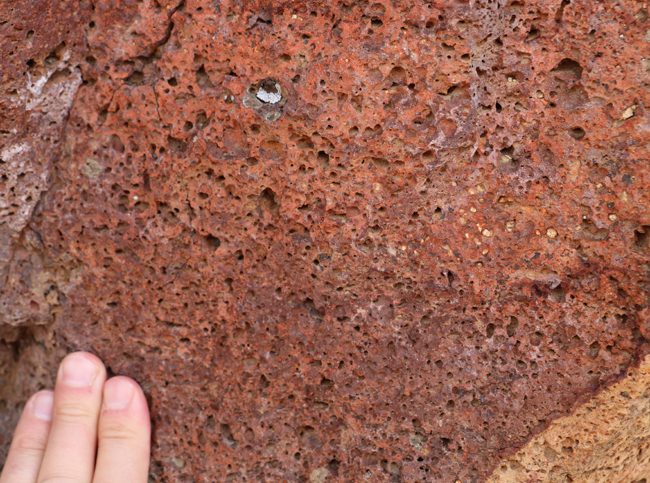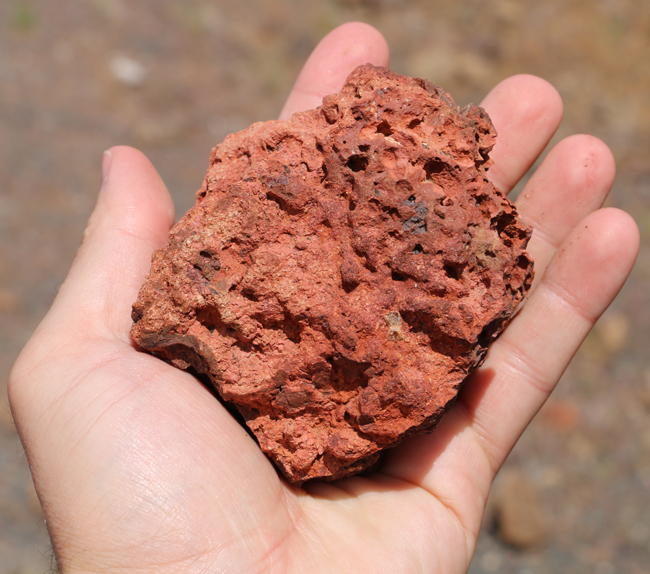Near Wilson Creek, Washington, we beheld a bright orange stripe on the cliff:

It’s a bold color, and it begs the question: What’s going on here?

Laterite, a tropical soil, has a similar color scheme, and I’ve seen laterite horizons sandwiched between lava flows before (e.g., at the Giant’s Causeway in northern Ireland). But when I zoomed in on this orange layer, it appeared to be vesicular basalt:

Can a basalt flow contact metamorphose an older basalt flow?

Maybe weathering is the key: So the story recorded here could therefore be: lava erupts, lava cools to basalt, basalt weathers from the top down, producing clay and rust-rich saprolite, new lava erupts, cooks weathered basalt beneath, baking it orange.

Other thoughts? Chime in.


That’s a very plausible scenario. And the vesicles could be the result of clay entrapped water suddenly turned to steam.
For comparison, look at the soil atop the upper basalt. Similar thickness, similar undulating lower boundary where it merges with the weathered basalt. The big difference is the color. It must’ve been a wetter climate then.
I’d guess you pretty much nailed it. This exposure brings to mind an analogous situation at a roadcut that was a stop on one of our University of Calgary undergrad field trip stops in southern British Columbia, back in…ahem…1980. The road cut is at 50.569666, -119.885685. The GE satellite imagery is poor but look at the Streetview images. I looked up the notes I took of our professors’ armwaving during the field trip:
“…Monte Creek Road (to Vernon), volcanic clastics (Tertiary) overlain by basaltic lava flows. Weathered volcanics are redeposited in river bar, then overflowed by basalt. Upper 1-2 ft of clastics are baked (while wet) oxidizing iron, making clastics red…”
That pretty much jibes with your hypothesis. All that porosity in your vesicular basalt may have held lots of water, and/or Michael’s idea of steam-induced bubbles could also fit into the picture.